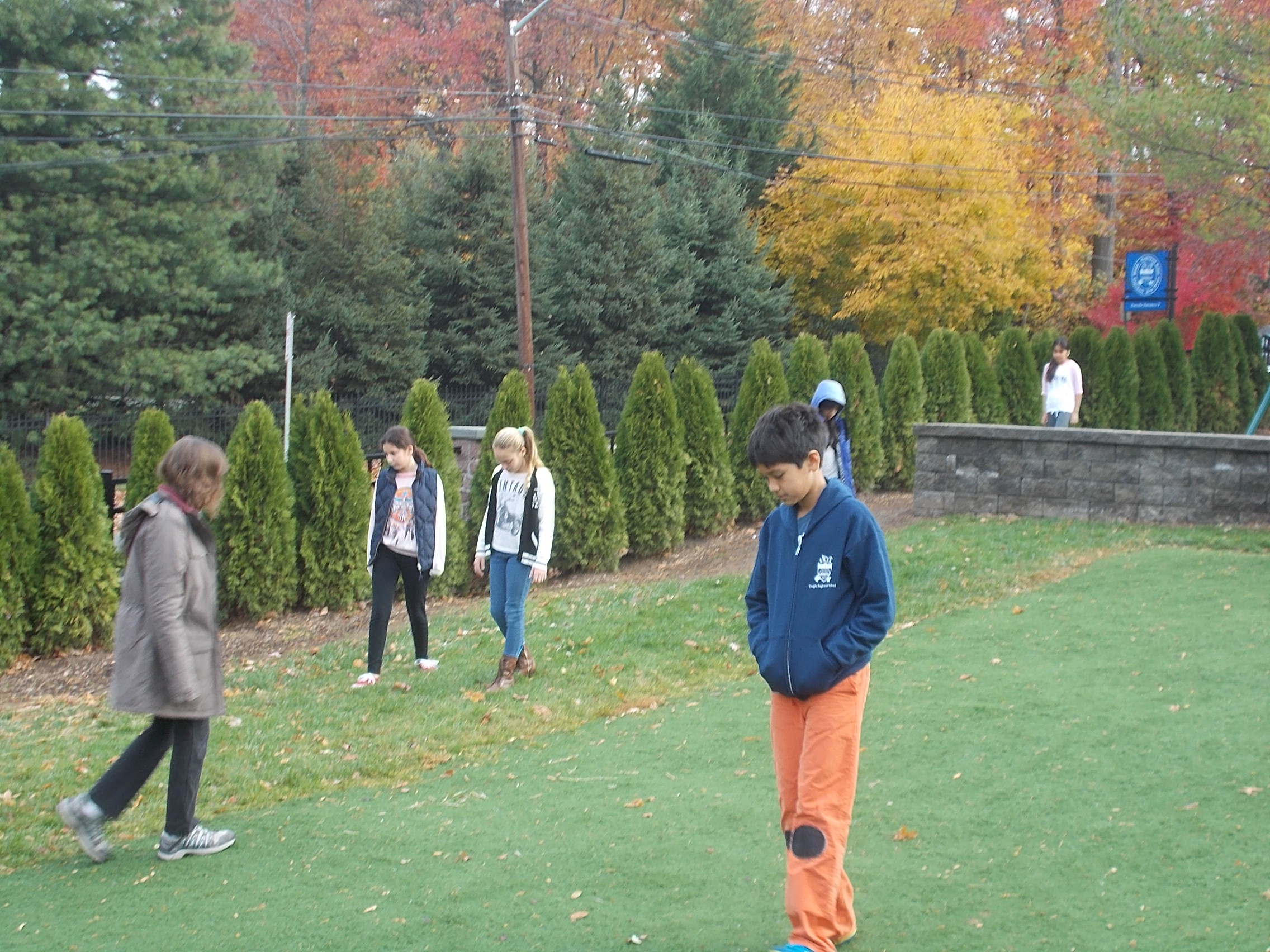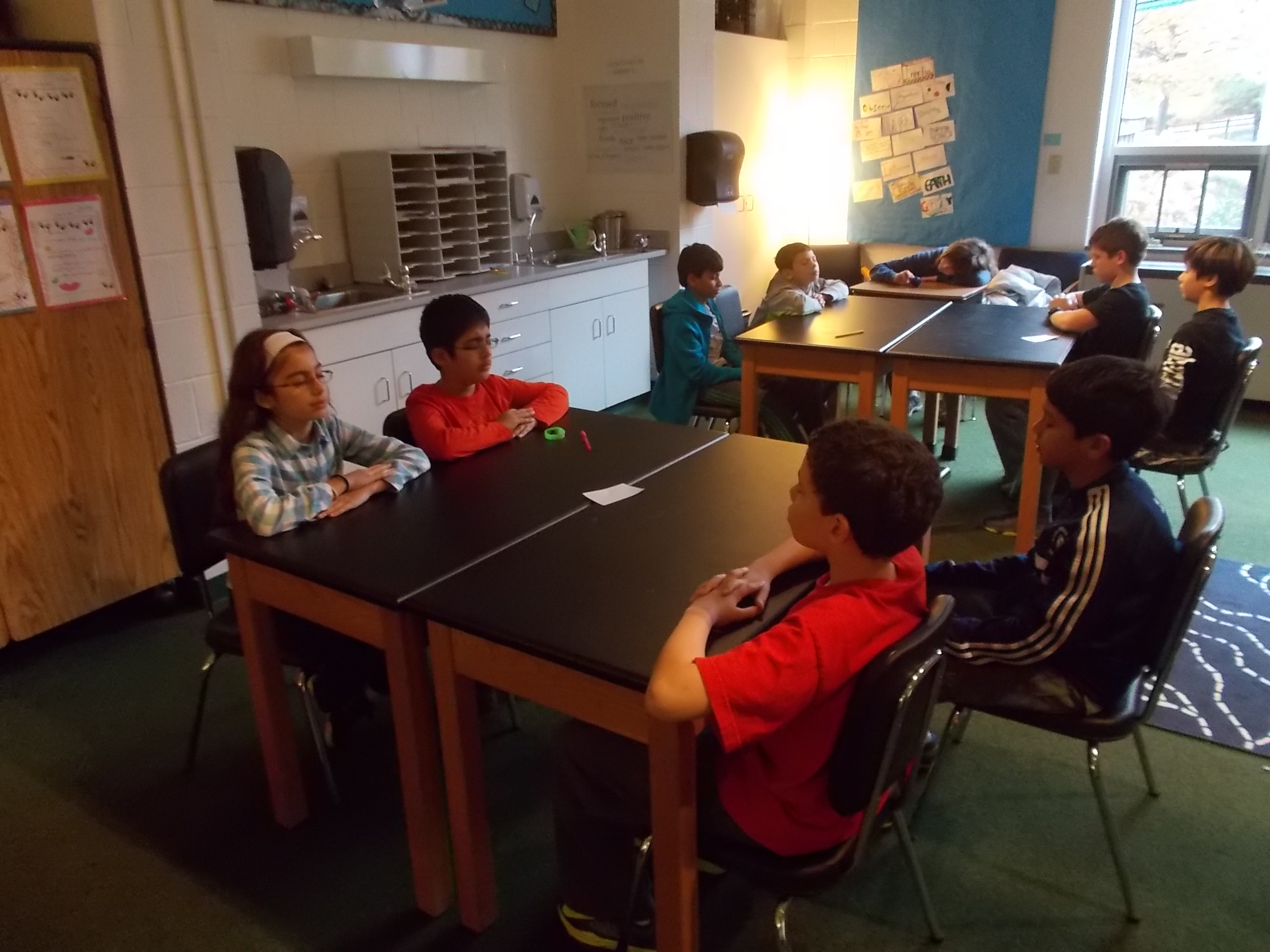This year the Dwight-Englewood community has been focusing on various pathways to well-being. There have been a variety of student assemblies, evening programs for families, and professional development opportunities for faculty that have focused on topics such as happiness, nutrition, and listening in a time of technology.
Mindfulness is another pathway to well-being that has been explored this year across the school. According to Psychology Today, “mindfulness is a state of active, open attention to the present”. Please take a look at how some Lower School teachers incorporate mindfulness in their work with the children each day.
4th Grade Science: Beth Lemire
When studying the Hudson River this year fourth graders were asked to consider many aspects of the river. They were to look not only from a scientific-environmental viewpoint but also through cultural and personal lenses as well. Albert Einstein once said “Look deep into nature, and then you will understand everything better.” Using mindful practices to do just that brought new depth and understanding to the children’s thinking that I would not have been able to witness in any other way.
After learning how to focus on relaxing their bodies and breathing, the children were able to visualize being on top of Mount Marcy where the Hudson River begins. Some beautifully vivid guided imagery stories were born from this activity about the journey of this great river from the top of Mount Marcy all the way to the North Atlantic including descriptions of sights and sounds along the way.
Art: Elisa Garcia
Our Mindfulness Journey in the Studio and Experiencing a Glimpse of Enlightenment
“All differences in this world are of degree, and not of kind, because oneness is the secret of everything.”
~ Swami Vivekananda
After developing a dedicated practice of yoga, tai chi, meditation and mindfulness in my personal life as well as immersing myself in nature, I have a deep appreciation for stillness. With a silent mind, it is easy to observe, recognize and let go of resistance in all forms. This practice that has also informed my artwork, relationships with individuals, and with animals has allowed me to gain deeper insight into the meaning of life.
Children naturally vibrate at higher frequencies than most as they generally know no burdens to weigh their perfect minds down. While contemplating deepening our practice in visual art as a community of learners for the approaching school year, I signed up for an in-house mindfulness workshop organized by our own Dr. Sherronda Brown in the fall of 2014. I can truly say it was one of the most profound educational workshops that I have attended. It was carefully crafted for the exposure of mindfulness in a learning community and provided ample participation as to lend itself to true future practice for myself & the other attendees. My Dwight-Englewood colleagues and I left the workshop exhilarated with the anticipation of using what we had learned that day.
During the workshop, the instructor shared multiple techniques for introducing mindfulness to children of all ages. Each technique had a different point of interest. The one that struck me the most and that I chose to incorporate was teaching children to focus on their breath in order to improve attention. Each day classes ranging from kindergarten through fourth grade would come to art and use the first few minutes to focus their attention on their breathing, allowing their minds to be still and create a deep quiet space, in which they could center themselves. Naturally, some children struggled with this initially, but there were others who quickly gave themselves over to the concept of stillness. In time, they each began to experience the benefits of creating a quiet mind and space.
Over the course of several weeks, I witnessed children coming into the studio requesting to lead or guide our focused sessions. The students would keep track of who was next to lead, thus fostering independence. Each child initiated his or her own style of mindfulness while verbally guiding the other children in relaxing the mind and focusing attention on breathing from their core. I began to notice that dedicating a few minutes at the beginning of each session gave meaning to our entire class. Children were more focused, intentional, and confident.
This soon grew to, “Ms. Garcia, today I really need it, I need at least four minutes, I need five minutes!” Ms. Garcia, “I can’t wait! Can I lead our mindfulness right away?” Children began negotiating with me and with one another to demonstrate what mindfulness looks like and sounds like in a learning community. The children began sharing their own personal stories about how mindfulness has improved their quality of life. Children started reporting that they felt more tranquil, more peaceful inside; they no longer worried. At night when one student used to have trouble falling asleep, he practiced his deep breathing and found that he could experience deeper rest. There has been a flood of appreciation for our practice and journey together. Children looked forward to exchanging their experiences on a daily basis.
5th Grade: Submitted by Erik Swanson
As part of our school-wide health and wellness initiative, the fifth grade team attended a mindfulness workshop led by Bonnie Levine in October. Several years ago, Mrs. Levine decided to incorporate mindfulness practices into her classes. During the October workshop, she shared some of her personal recollections of those experiences. She also taught us various mindfulness practices that we could include in our daily routines with our students.
One of the main ideas that we learned about mindfulness is not about clearing the mind, but about being present. Too many times throughout the day, we are distracted by thinking about what happened in the past or what we are going to do in the future. If our brains are emotionally overwhelmed or stressed, it is difficult to make clear decisions and act thoughtfully. Practicing mindfulness and having the awareness of being in the moment strengthens concentration, attention and supports “readiness to learn”. The advantage of mindfulness is that it can be practiced by anyone at any time and is a great aid to the educational process.
As a grade, we have been practicing mindfulness by taking part in several activities in the morning and periodically throughout the day. Mindful breathing, listening, eating and walking are several of the practices we have focused on. These activities take only a few minutes; however, they have become an integral part of our day.
I asked my students how they felt about our mindfulness practices and these were some of their responses:
“I learned that I never really listened. Also, I learned I always thought about the past or future, never the present.”
“The mindfulness practice makes me feel positive and peaceful.”
“I like the mindfulness practices because you get some time to reflect. I learned that in such a high-tech world it is sometimes hard to connect or reflect.”
“Mindfulness helps with calmness and relaxation.”
“Mindfulness helps me connect with myself.”
Mindfulness has been shown to reduce stress, boost working memory and increase self-reflection. These mindfulness practices are methods or tools our students can use and benefit from each day.




